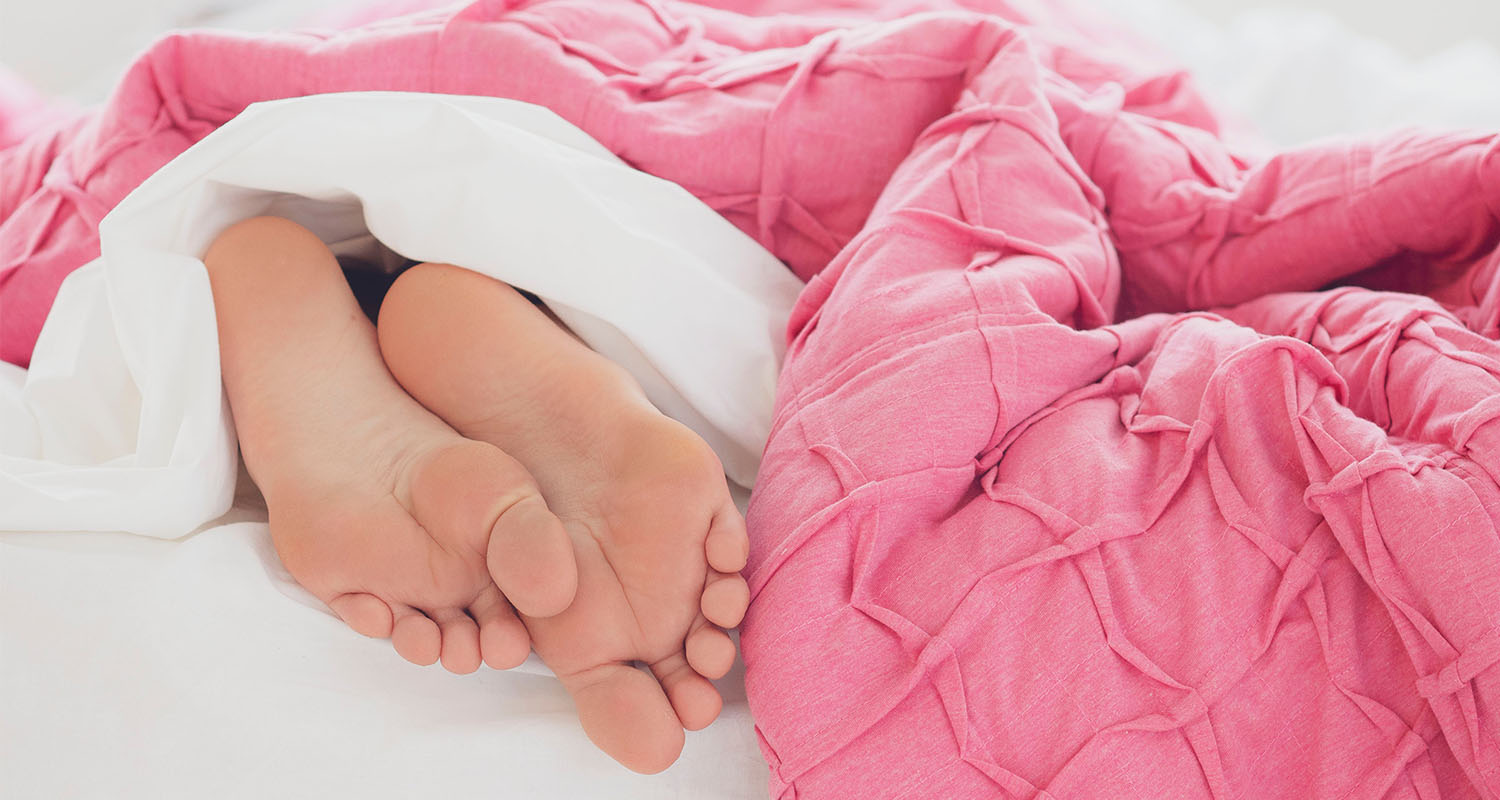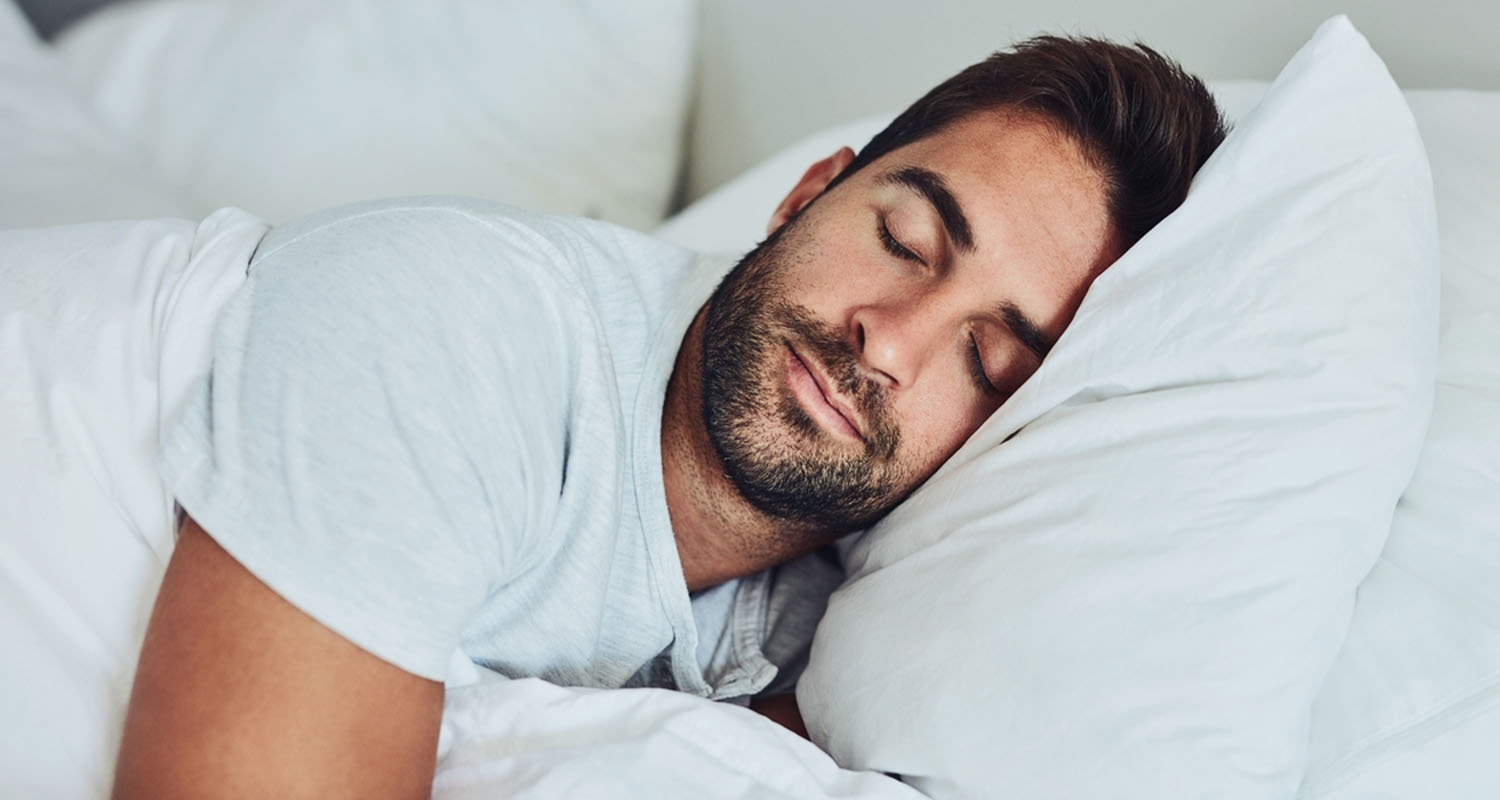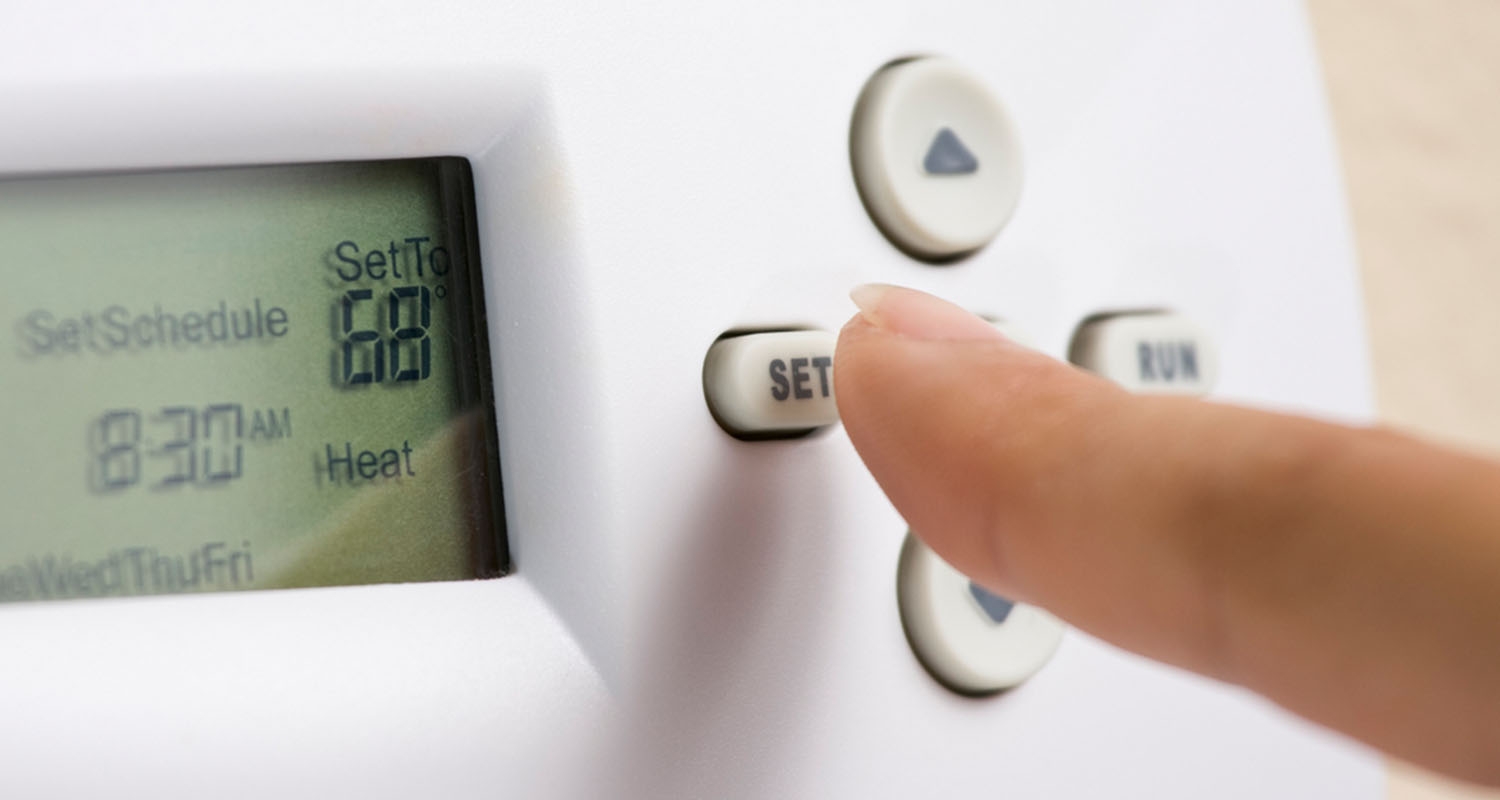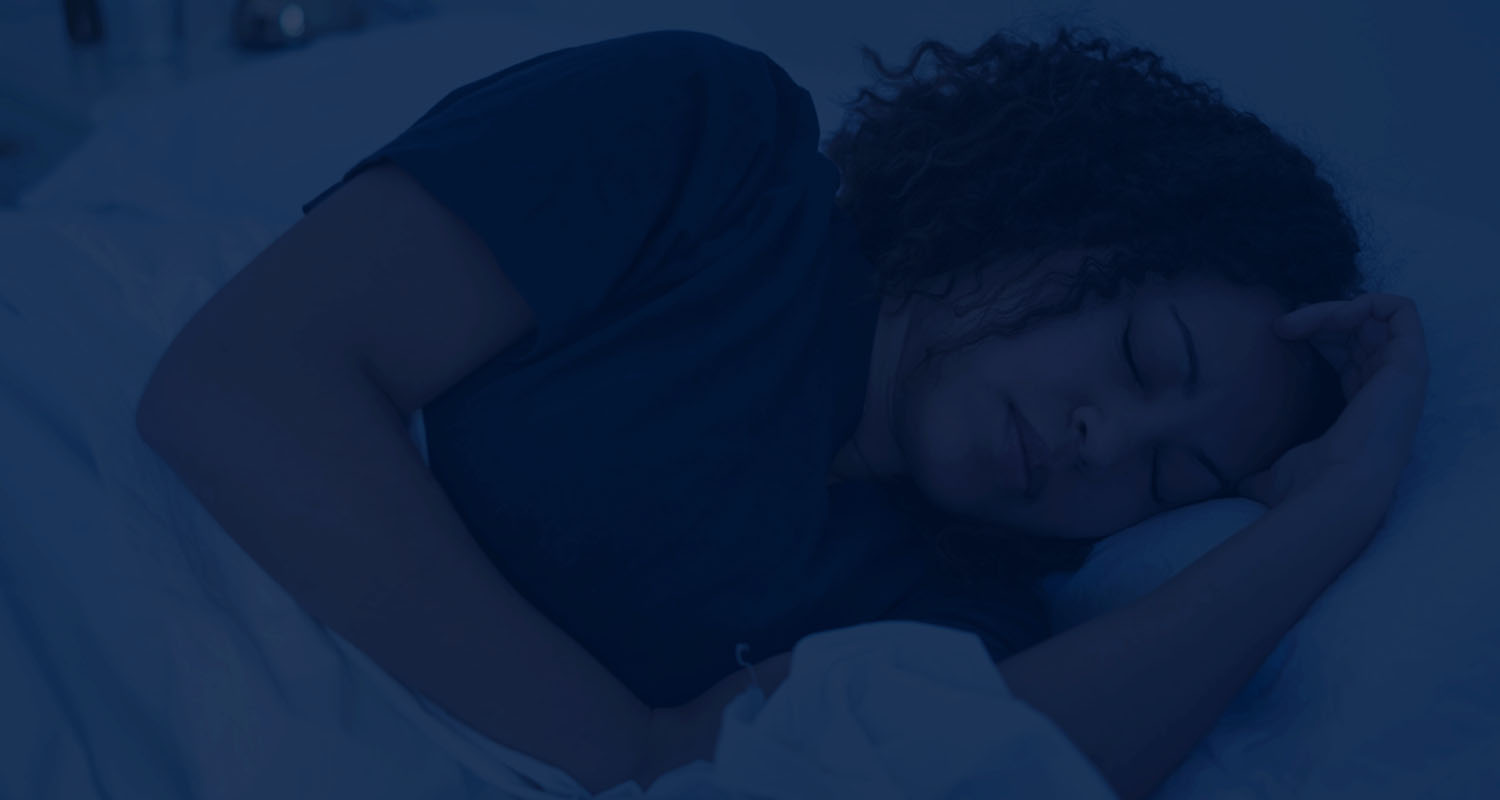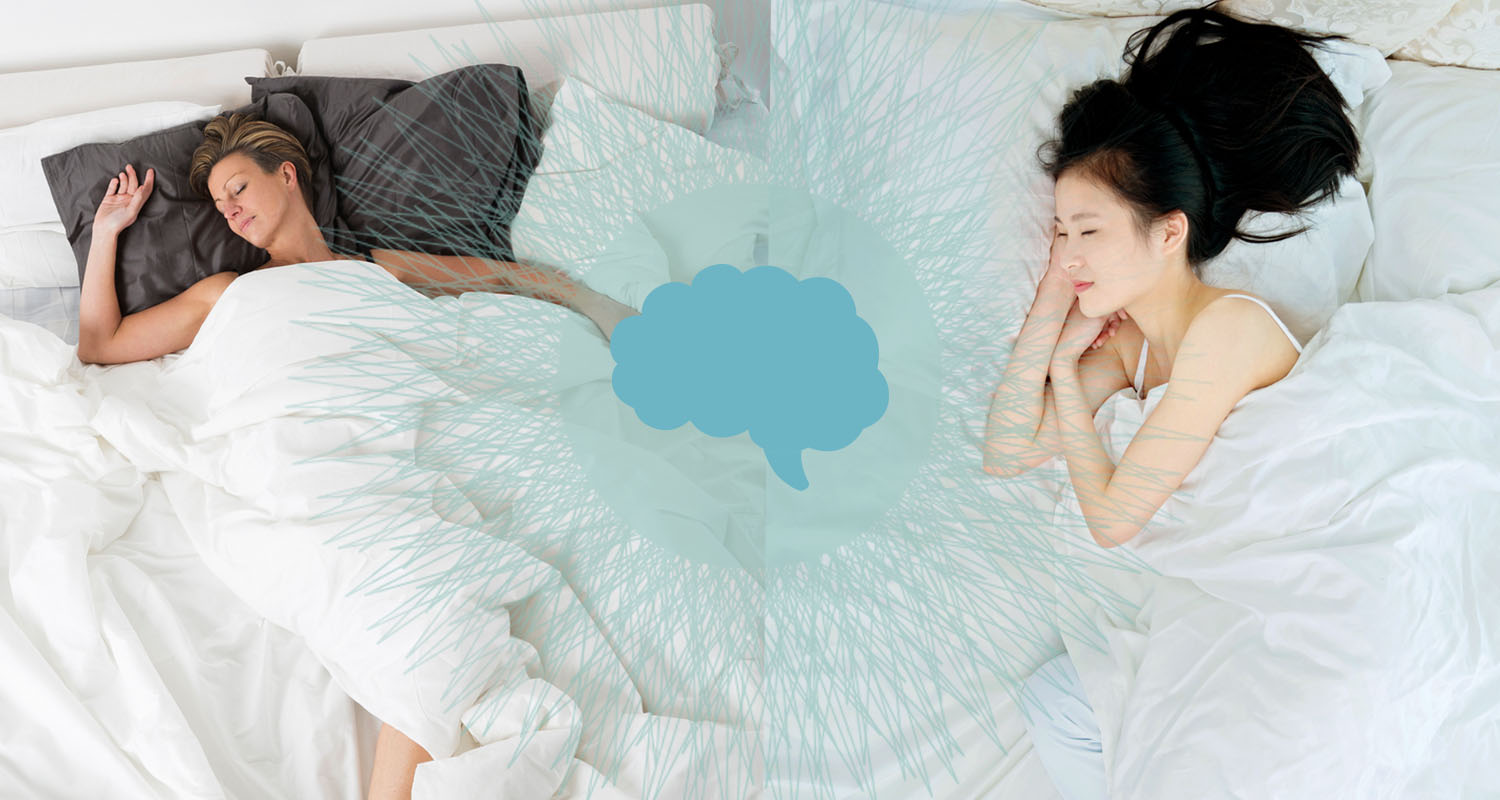
[tldr]
- Your sleeping position has a surprisingly big impact on your performance and how you feel when you’re awake.
- Sleeping on your back has some benefits, but it can also put tension on your hips and lower back, decrease air flow while you sleep, worsen snoring and sleep apnea, and decrease your brain’s ability to clear out waste products.
- Sleeping on your side is better, although it still comes with alignment challenges. Fortunately, you can use the tips in this article to upgrade your side sleeping position.
- Read to the end for two bonus sleeping hacks.
[/tldr]
What’s the best sleeping position? It’s probably not something you think about often, but it’s an important question. How you align your body when you sleep has a surprisingly profound impact on your performance. It makes sense, considering you spend about a third of your life in your sleeping position of choice. Read on to find out what’s more preferable — sleeping on your side or your back — and sleep hacks to help you maximise your rest.
The importance of your sleep position
There’s been debate for years about the best sleeping position. While there are cases for both back and side sleeping, pretty much everyone agrees that sleeping on your stomach is out: stomach sleeping contorts your spine into an unnatural position and compresses your cervical joints, which is a recipe for neck and back pain. You aren’t really designed for stomach sleeping.
That leaves back sleeping and side sleeping. Both have benefits and downsides that reach farther than you might expect. Sleeping positions can affect digestion, pain, mobility, and even your brain — in his Bulletproof Radio podcast episode [iTunes], researcher Dan Levendowski talks about the neuroscience of sleep, and how your sleeping position changes your brain’s ability to remove cellular waste.
Here’s a comprehensive guide to sleeping positions, with the benefits and downsides of each.
What you need to know about sleeping on your back
Back sleeping has a couple things going for it. Sleeping on your back keeps your spine and neck in alignment with one another, which decreases the odds of you waking up in pain (although there’s a caveat to this benefit, discussed below). Back sleeping also distributes pressure evenly across both sides of your body, meaning you don’t tighten up one shoulder or hip by sleeping on it all night.
But sleeping on your back isn’t perfect. It comes with a few issues:
Back and hip pain/tightness
Do you cross your legs when you lie on your back? If so, try lying on your back right now with your legs uncrossed. After a minute or two, you’ll likely feel tension in your hips and lower back. Odds are you have tight hamstrings or a tight lower back from sitting all day, and you instinctively cross your legs to increase back support. That’s fine for short stints, but crossing your legs for 8 hours a night pulls your hips and back out of alignment, which negates the main benefit of back sleeping and can cause you pain over time. Fortunately, the fix here is easy: stick a firm pillow under your knees/thighs and keep your legs uncrossed with your toes pointed up. It’ll support your back and allow your hips to relax.
Decreased air flow, snoring, and sleep apnea
When you sleep on your back, your lower jaw can sink back and change the shape of your airway, keeping you from breathing properly. A misaligned lower jaw often leads to snoring and sleep apnea in some people. If you snore or have sleep apnea, back sleeping can make things worse, and can decrease sleep quality dramatically.[ref url=”https://www.ncbi.nlm.nih.gov/pmc/articles/PMC4106940/”][ref url=”https://www.ncbi.nlm.nih.gov/pmc/articles/PMC4549693/”] Even healthy young adults who don’t snore report lower quality of sleep when they sleep on their backs.[ref url=”https://www.ncbi.nlm.nih.gov/pubmed/6844798″]
Faster brain aging
Your body position affects how well your brain clears out waste products, including amyloid beta, the protein fragment that’s a hallmark of Alzheimer’s Disease. Early research found that rats lying on their backs cleared significantly less waste than they did lying on their sides.[ref url=”https://www.ncbi.nlm.nih.gov/pmc/articles/PMC4524974/”] In his episode on Bulletproof Radio [iTunes], researcher Dan Levendowski talks about his cutting-edge research that has found the same in humans (Levendowski’s research is undergoing peer review at the time of this article’s publication). Strange as it sounds, sleeping on your back may make your brain age faster.
Side sleeping is great (and you can make it even better)
Sleeping on your side keeps your airways clear and supports your brain better than back sleeping does. However, normal side sleeping can cause alignment issues (picture sleeping with a pinched shoulder all night).
And because of the way your esophagus loops and connects to your stomach, sleeping on your right side can push stomach acid up your esophagus and cause acid reflux (heartburn), or make existing acid reflux twice as bad.[ref url=”https://www.ncbi.nlm.nih.gov/pubmed/8071510?dopt=Abstract”]
Fortunately, the downsides to side sleeping all have easy fixes. Use these side sleeping upgrades to create the ideal sleeping position and get an amazing night’s sleep:
Favor your left side
Sleeping on your left side gets rid of the heartburn issue that sleeping on your right side creates.[ref url=”https://www.ncbi.nlm.nih.gov/pubmed/8071510?dopt=Abstract”][ref url=”https://www.ncbi.nlm.nih.gov/pubmed/11051341?dopt=Abstract”][ref url=”https://www.ncbi.nlm.nih.gov/pubmed/10445529?dopt=Abstract”]
Support your neck and shoulders
Side sleepers face three alignment challenges: neck, shoulders, and hips. Do you put your hands in the prayer position under your cheek when you sleep? Or maybe stuff your shoulder under your pillow? That’s because you don’t have enough neck support. Add a second pillow and get to a height where your neck is neutral and in straight alignment with your spine. This will give your bottom shoulder room to stay aligned as well. If you still don’t feel you have enough support, roll up a towel and put it in your pillowcase so that it fits in the curve of your neck.
Support your hips
Grab one more pillow and put it between your thighs while you sleep. The pillow will keep your top hip from collapsing in on your bottom one and causing hip and lower back tension.
These minor shifts in alignment may not sound like a big deal. You may not wake up with pain right now either. But keep in mind that you’re putting your body out of alignment seven or eight hours a night, every night. That’s a third of your life. Those little misalignments will build over time, but if you address them now, you’ll help keep your joints in great shape. You may even get more flexible as your muscles and joints loosen up overnight.
2 bonus hacks for a better night’s sleep
There are plenty of other ways to improve your sleep. Here are two easy bonus hacks to help you sleep more deeply:
1. Keep your room cold at night
Heat increases wakefulness at night and prevents you from reaching the deeper stages of sleep.[ref url=”https://www.ncbi.nlm.nih.gov/pmc/articles/PMC3427038/”] Humid heat compounds the effects. Keep your room around 68 degrees Fahrenheit (20 degrees Celsius) at night. Your body will reach the perfect temperature to fall asleep and stay asleep.
2. Sleep in complete darkness.
Light, particularly blue light from electronics, disrupts your melatonin production.[ref url=”https://www.ncbi.nlm.nih.gov/pmc/articles/PMC4734149/”] Melatonin is a hormone that promotes sleepiness and triggers repair while you sleep. Sleeping in total darkness will dramatically improve your sleep quality. Get blackout curtains and electrical tape to put over internet routers and any other small light sources. Your body will thank you.
Interestingly, red or amber light does not disrupt melatonin production, maybe because humans have evolved to sleep around a fire. If you’re working late on your computer, download f.lux. It’s a free program that syncs with the sunset, replacing blue light with amber light when the sun sets. If you use f.lux and decrease your screen’s brightness, you can use your computer at night with minimal impact on your sleep quality.
